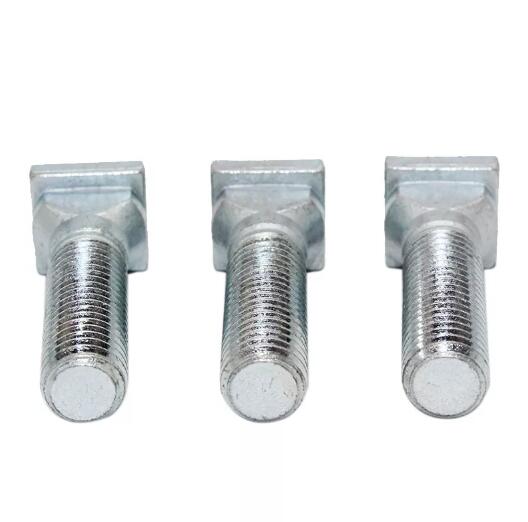Preserving Brilliance: The Significance of Passivation in Stainless Steel T Bolts for Corrosion Prevention
2023-12-18
Introduction:
Stainless steel T bolts, revered for their corrosion resistance, owe much of their durability to a process known as passivation. This surface treatment is pivotal in ensuring that T bolts maintain their pristine appearance and structural integrity over time, even in challenging environments. In this blog, we'll unravel the significance of passivation in stainless steel T bolts and delve into how it plays a crucial role in preventing corrosion.
1. Understanding the Nature of Stainless Steel:
Stainless steel, despite its name, is not completely impervious to corrosion. It primarily owes its corrosion resistance to the presence of chromium, which reacts with oxygen to form a thin, protective oxide layer on the surface of the steel.
2. The Oxide Layer:
The oxide layer, primarily composed of chromium oxide, acts as a barrier, shielding the underlying stainless steel from the corrosive effects of environmental elements such as moisture, air, and contaminants. This layer is what gives stainless steel its renowned corrosion resistance.
3. Challenges to Corrosion Resistance:
While the natural oxide layer provides excellent protection, the surface of stainless steel T bolts can still be compromised during manufacturing processes. Contamination from iron particles, scale, or other impurities can hinder the formation of the protective oxide layer.
4. Enter Passivation:
Passivation is a post-fabrication process specifically designed to enhance the corrosion resistance of stainless steel T bolts. It involves removing any free iron or iron compounds from the surface of the bolts, allowing the chromium content to interact with oxygen and form a more robust and uniform oxide layer.
5. Chemical Process of Passivation:
The passivation process typically involves immersing the stainless steel T bolts in a solution, often an acid-based solution containing nitric acid. This solution removes any contaminants, scale, or embedded iron particles on the surface of the bolts.
6. Benefits of Passivation:
- Improved Corrosion Resistance: The removal of free iron and contaminants during passivation promotes the formation of a clean and homogeneous oxide layer. This enhances the bolts' ability to resist corrosion, especially in aggressive environments.
- Long-Term Durability: Passivated stainless steel T bolts exhibit extended durability and lifespan due to their enhanced resistance to corrosion. This is particularly crucial in applications where the bolts are exposed to harsh conditions.
7. Preventing Rouging:
In addition to preventing general corrosion, passivation is effective in preventing a phenomenon known as "rouging" in stainless steel. Rouging refers to the formation of red or brown iron oxide deposits on the surface, and passivation helps mitigate this issue.
8. Compliance with Industry Standards:
Passivation is often performed in accordance with industry standards and specifications to ensure consistency and effectiveness. Standards such as ASTM A967 outline the procedures for passivation of stainless steel.
Conclusion:
Passivation stands as a cornerstone in the preservation of stainless steel T bolts, elevating their resistance to corrosion and ensuring a long and reliable service life. This meticulous process, often performed post-fabrication, transforms stainless steel T bolts into corrosion-resistant marvels, ready to withstand the rigors of diverse environments. As industries continue to rely on stainless steel T bolts in critical applications, the significance of passivation remains integral to the longevity, durability, and corrosion resistance of these essential fasteners.



